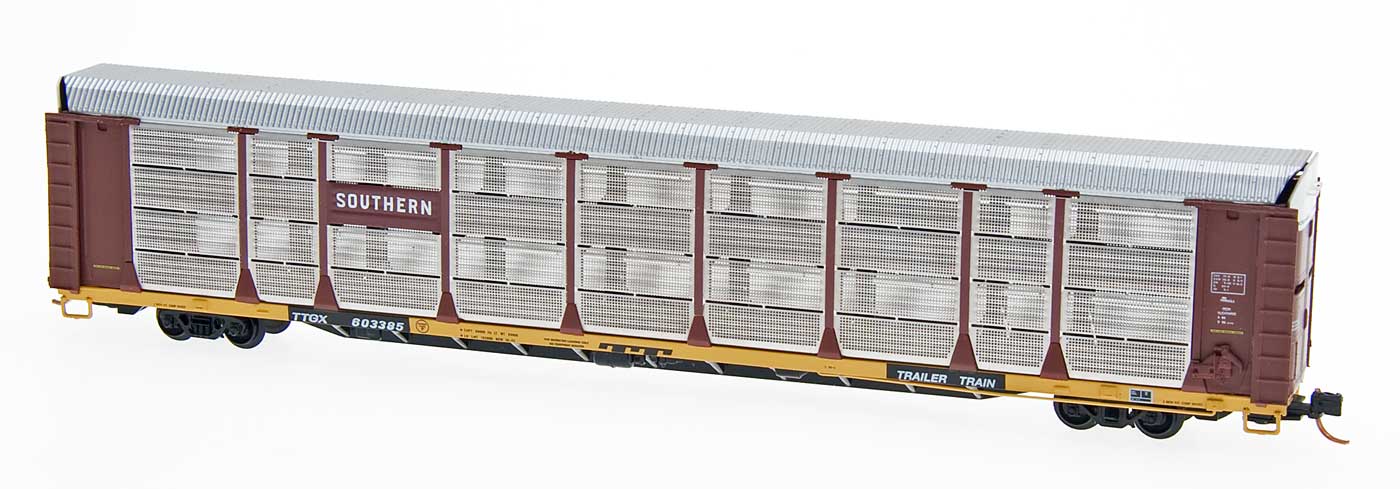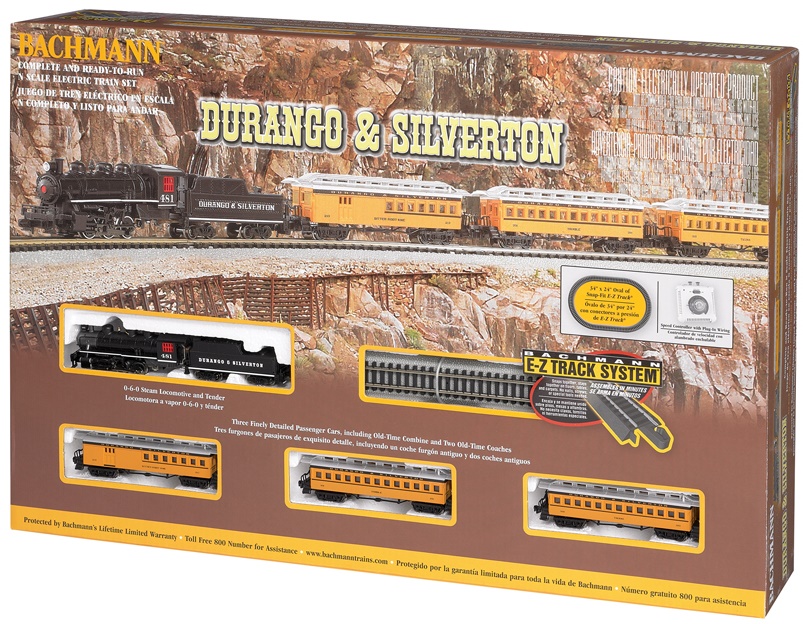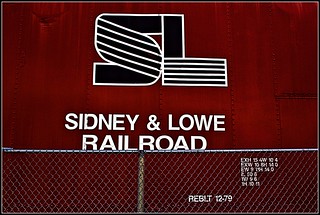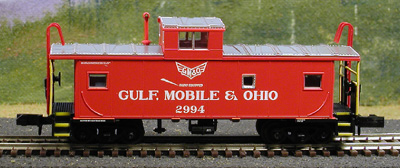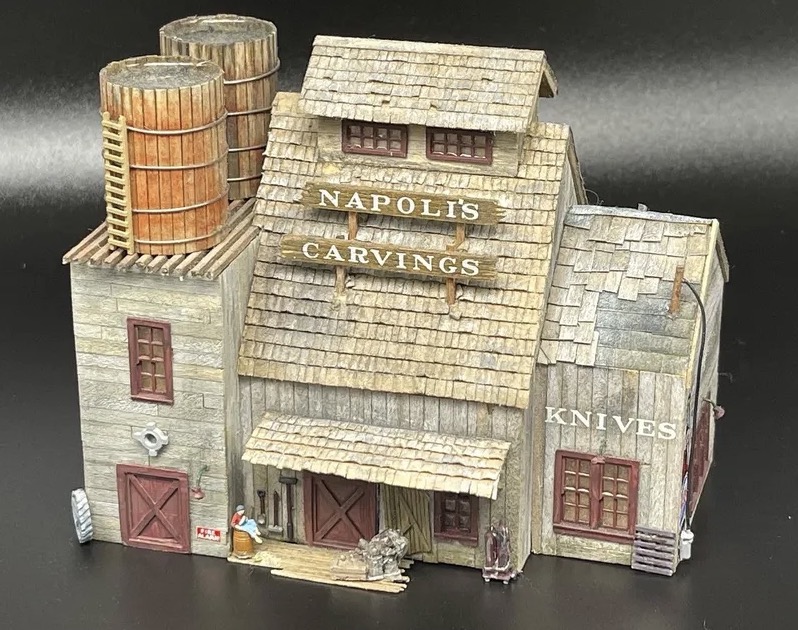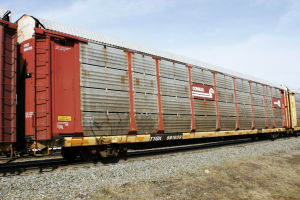Specific Item Information: Built: NEW 10-79
Model Information: A few of these cars have operating end doors. They have truck-mounted MTL couplers. The tooling was originally created by Red Caboose, but was later sold to Fox Valley.
Prototype History: For many years, automobiles were carried in boxcars like other freight. The relative light weight of the cars for their size meant that these boxcars reached their volume capacity far faster than their weight limit. Loading cars through the side doors was also challenging and inefficient. End door boxcars helped with the loading, but could still only be loaded one at a time. Due to these limitations, modified flatcars, known as autoracks, began to appear in the 1960s. At first, these cars were open sided, with the cargo exposed, but later cars added the protection of aluminum sides to enclose the automobiles within.
Enclosed autoracks come in two basic configurations. Bi-level racks have a two decks: the floor of the flatcar itself, as well as one elevated deck. These cars can haul two rows of taller vehicles like vans and trucks. Tri-level racks have an extra deck and can carry three rows of conventional automobiles. Up until the 1990s, tri-level cars were far more common, but with the rise in popularity of the SUV, the number of bi-level cars has grown quickly over the past 20 years.
Enclosed autoracks come in two basic configurations. Bi-level racks have a two decks: the floor of the flatcar itself, as well as one elevated deck. These cars can haul two rows of taller vehicles like vans and trucks. Tri-level racks have an extra deck and can carry three rows of conventional automobiles. Up until the 1990s, tri-level cars were far more common, but with the rise in popularity of the SUV, the number of bi-level cars has grown quickly over the past 20 years.
Road Name History:  The Southern Railway (reporting mark SOU) (also known as Southern Railway Company) was a US class 1 railroad that was based in the Southern United States. It was the product of nearly 150 predecessor lines that were combined, reorganized and recombined beginning in the 1830s, formally becoming the Southern Railway in 1894.
The Southern Railway (reporting mark SOU) (also known as Southern Railway Company) was a US class 1 railroad that was based in the Southern United States. It was the product of nearly 150 predecessor lines that were combined, reorganized and recombined beginning in the 1830s, formally becoming the Southern Railway in 1894.
At the end of 1970 Southern operated 6,026 miles (9,698 km) of railroad, not including its Class I subsidiaries AGS (528 miles or 850 km) CofG (1729 miles) S&A (167 miles) CNOTP (415 miles) GS&F (454 miles) and twelve Class II subsidiaries. That year Southern itself reported 26111 million net ton-miles of revenue freight and 110 million passenger-miles; AGS reported 3854 and 11, CofG 3595 and 17, S&A 140 and 0, CNO&TP 4906 and 0.3, and GS&F 1431 and 0.3
The railroad joined forces with the Norfolk and Western Railway (N&W) in 1982 to form the Norfolk Southern Corporation. The Norfolk Southern Corporation was created in response to the creation of the CSX Corporation (its rail system was later transformed to CSX Transportation in 1986). The Southern Railway was renamed Norfolk Southern Railway in 1990 and continued under that name ever since. Seven years later in 1997 the railroad absorbed the Norfolk and Western Railway, ending the Norfolk and Western's existence as an independent railroad.

At the end of 1970 Southern operated 6,026 miles (9,698 km) of railroad, not including its Class I subsidiaries AGS (528 miles or 850 km) CofG (1729 miles) S&A (167 miles) CNOTP (415 miles) GS&F (454 miles) and twelve Class II subsidiaries. That year Southern itself reported 26111 million net ton-miles of revenue freight and 110 million passenger-miles; AGS reported 3854 and 11, CofG 3595 and 17, S&A 140 and 0, CNO&TP 4906 and 0.3, and GS&F 1431 and 0.3
The railroad joined forces with the Norfolk and Western Railway (N&W) in 1982 to form the Norfolk Southern Corporation. The Norfolk Southern Corporation was created in response to the creation of the CSX Corporation (its rail system was later transformed to CSX Transportation in 1986). The Southern Railway was renamed Norfolk Southern Railway in 1990 and continued under that name ever since. Seven years later in 1997 the railroad absorbed the Norfolk and Western Railway, ending the Norfolk and Western's existence as an independent railroad.
Brand/Importer Information:  Originally Red Caboose was a manufacturer of HO and N Scale model railroading items. It was located in Mead, Colorado, and was founded in 1990 by Leon Fairbanks.
Red Caboose manufactured highly accurate, well detailed N, HO, and O Scale freight cars and locomotives.
Originally Red Caboose was a manufacturer of HO and N Scale model railroading items. It was located in Mead, Colorado, and was founded in 1990 by Leon Fairbanks.
Red Caboose manufactured highly accurate, well detailed N, HO, and O Scale freight cars and locomotives.
Red Caboose closed its doors in January of 2015. Red Caboose N Scale has been sold to Fox Valley Models and HO was sold to InterMountain Railway. Many of the Red Caboose toolings have seen re-releases from Fox Valley since the acquisition. We just wish they would clean up the underframes. Red Caboose always went light on the details where they thought people wouldn't look.

Red Caboose closed its doors in January of 2015. Red Caboose N Scale has been sold to Fox Valley Models and HO was sold to InterMountain Railway. Many of the Red Caboose toolings have seen re-releases from Fox Valley since the acquisition. We just wish they would clean up the underframes. Red Caboose always went light on the details where they thought people wouldn't look.
Manufacturer Information: While they were in business, Red Caboose split its production runs between the US and China. Which models were produced where was a function of which body style and which run. Furthermore, which Chinese company was used for production is something we would love to find out.
Item created by: nscalestation on 2017-08-20 15:37:07. Last edited by gdm on 2021-01-31 07:27:51
If you see errors or missing data in this entry, please feel free to log in and edit it. Anyone with a Gmail account can log in instantly.
If you see errors or missing data in this entry, please feel free to log in and edit it. Anyone with a Gmail account can log in instantly.


